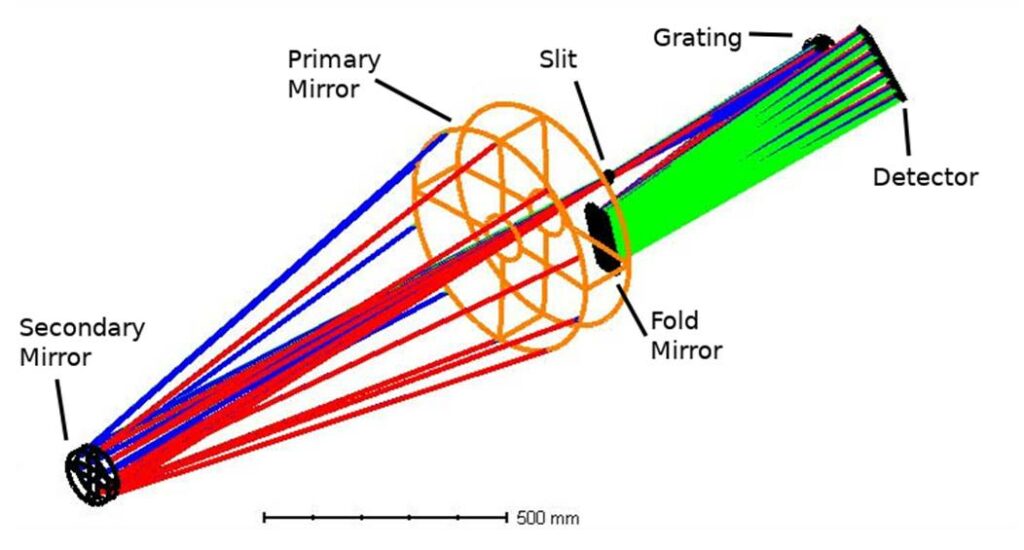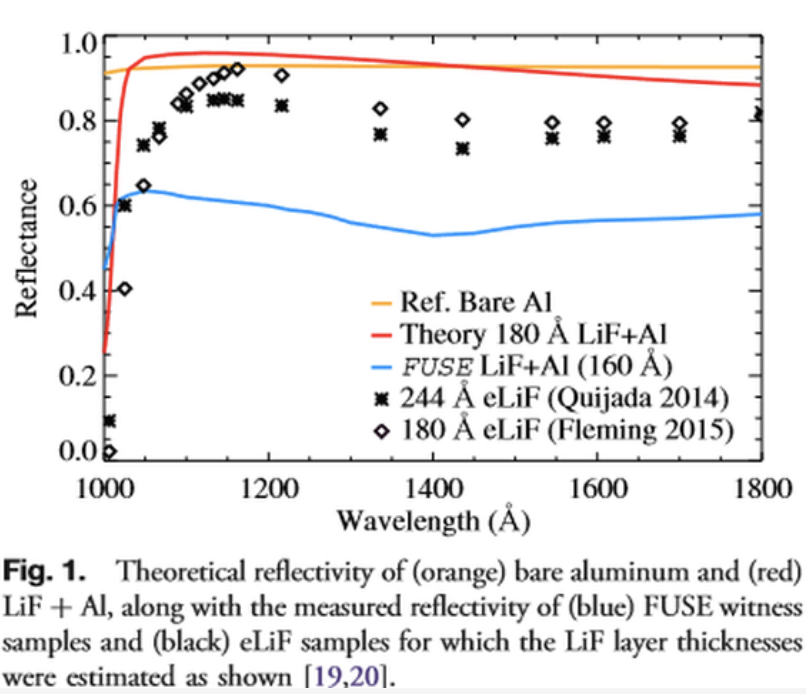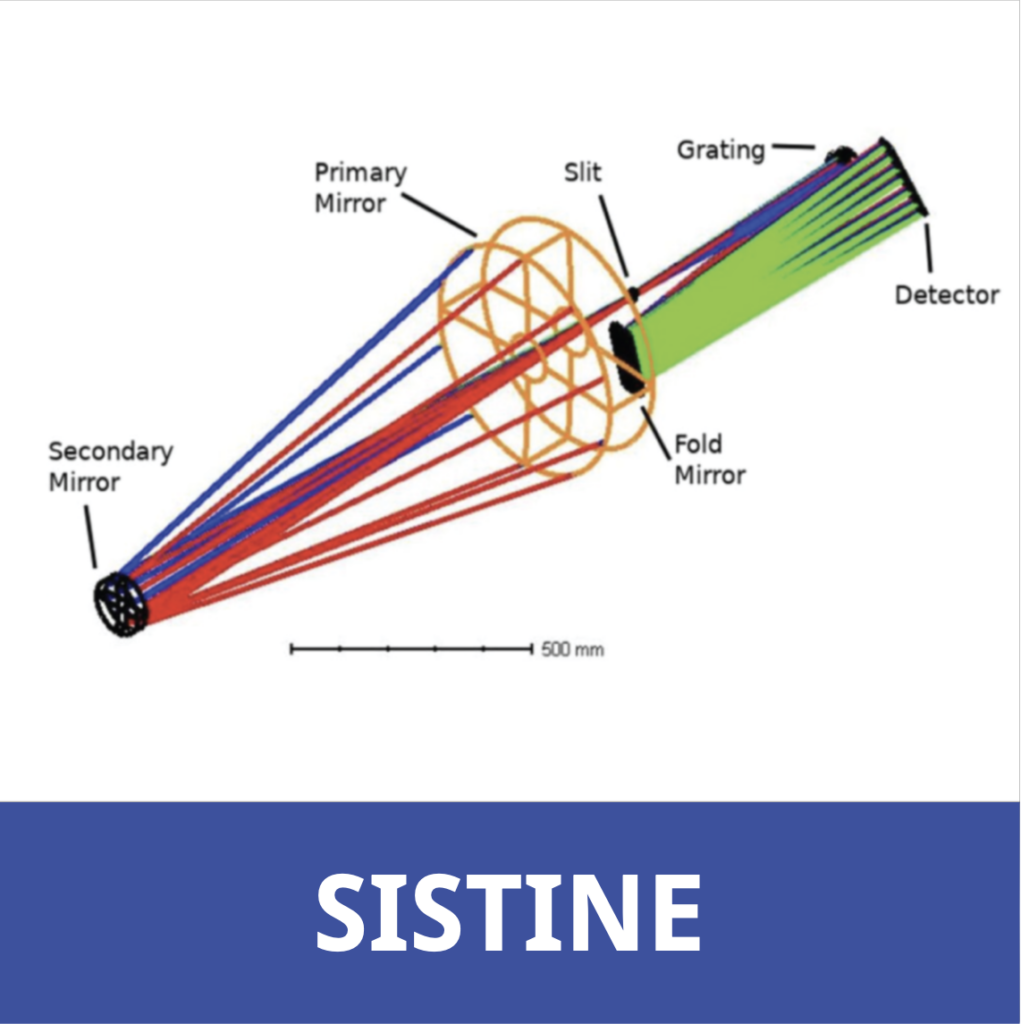The Instrument
SISTINE is an f/14 Cassegrain telescope with a focal length of 7,000 mm, which feeds an f/32 spectrograph. The spectrograph has a designed resolving power of at least 10,000 across the 100 –160 nm bandpass with imaging performance between 0.7 – 2″. The optical assembly includes a 0.5 m parabolic primary mirror and a 91 mm convex hyperbolic secondary mirror with a long slit (10″ x 6′). The light is dispersed by a holographically ruled grating and imaged by two 110 x 40 mm micro-channel plate detectors. The entire assembly is housed in 22 in rocket skins.

Science
The goal of SISTINE is to help characterize the ultra violet (UV) irradiance spectrum of exoplanet host stars. The extreme UV (EUV: 20 – 91 nm), far UV (FUV: 92 – 69), and near UV (NUV: 170 – 400 nm) comprise the UV irradiance spectrum of a star. These UV photons control atmospheric heating, stability, and the photochemical structure of the atmospheres. SISTINE will be observing in the FUV with a bandpass of ~100 – 160 nm.
A host star’s UV radiation drives the atmospheric chemistry of its orbiting planets, thus affecting their habitability (in regards to known biological life) and available bio-markers. The habitable zone (HZ) around a star is the area where liquid water can be maintained on the surface of a planet for some portion of its orbit. Stellar UV radiation can strip away atmospheres as well as disassociate water molecules present on terrestrial exoplanets. A complete understanding of the HZ requires a thorough characterization of the host stars UV output.
Additionally, when probing exoplanet atmospheres, astronomers have identified a number of atmospheric constituents to look for as possible signs of life – known as bio-markers. O2, O3, CH4, and CO2 are considered to be the most important bio-markers on Earth-like exoplanets. The photochemistry of these species is dependent on the intensity and type of UV output of the host star, which can disassociate (H2O, CO2, CH4) or drive the chemistry of (O2, O3) the different bio-markers.
The first launch of SISTINE will observe NGC 6826, a planetary nebula, in the summer of 2019. This flight will gather useful scientific data on the target regarding the ionization and molecular structure of the planetary nebulae. Furthermore, this flight will prepare the payload for its second launch in the summer of 2020, where it will observe the nearest-to-Earth star system Alpha Centauri to characterize the UV output of exoplanet host stars.
ref: Kevin France et al. (2013), THE ULTRAVIOLET RADIATION ENVIRONMENT AROUND M DWARF EXOPLANET HOST STARS, ApJ 763 149
Technology
Aluminum coated mirrors have a high theoretical reflectivity in the ultra violet (UV), but require additional protective coatings to avoid oxidation. Recent progress in the physical vapor deposition processes (PVD) of lithium fluoride (LiF + Al) coatings have made the greatest gains in advancing aluminum mirrors towards their theoretical limit. Though flown with success in past NASA missions (FUSE), aluminum optics are rarely used because the required protective LiF coatings are susceptible to hygroscopic degradation. See the plot below for quantitative measurements.



